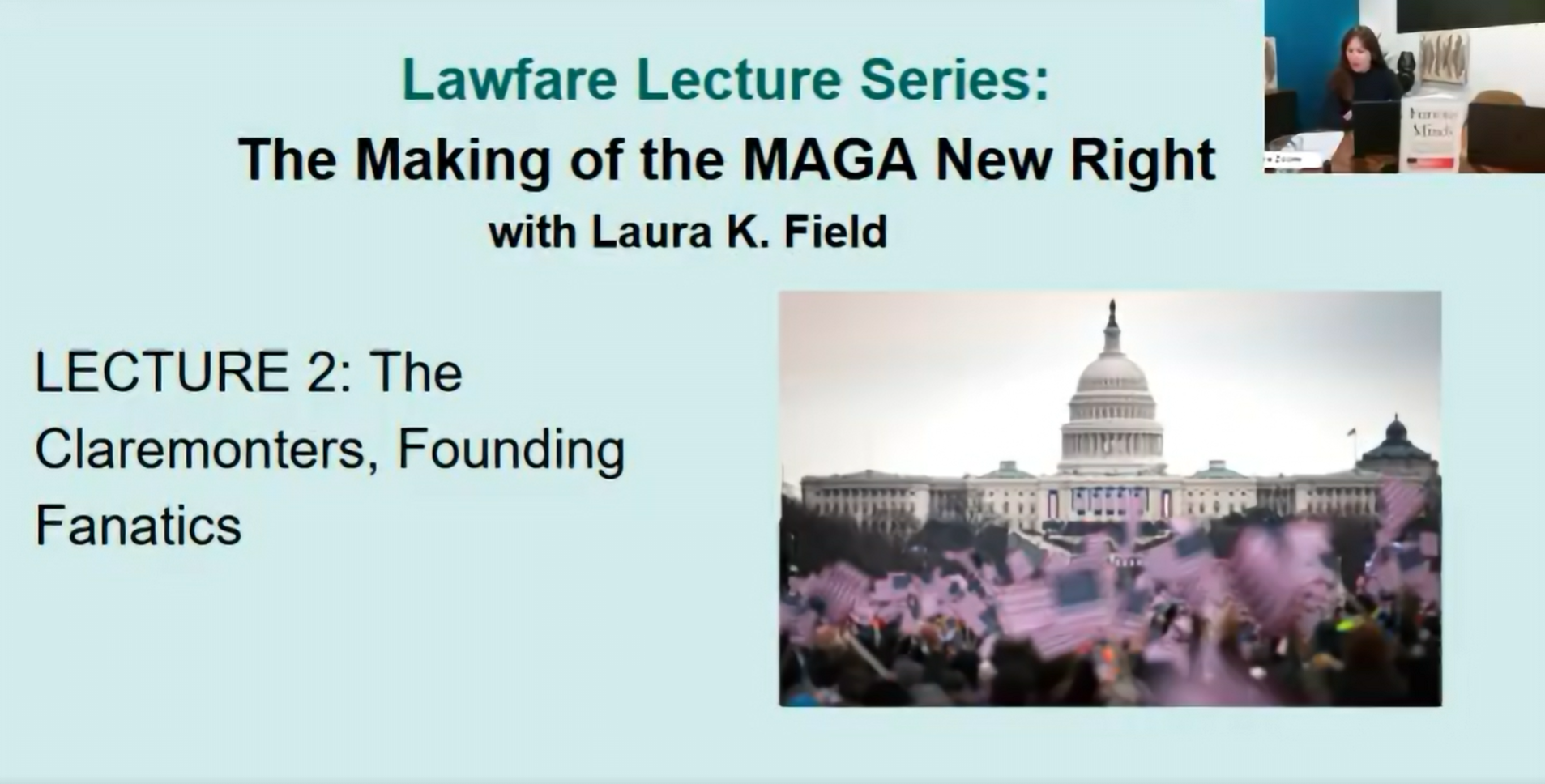Why We Wrote ‘After Trump’
Donald Trump operated the presidency in ways that reveal its vulnerability to dangerous excesses of authority and dangerous weaknesses in accountability. “After Trump” explains what should be done to mend the presidency after Trump leaves the scene.

Published by The Lawfare Institute
in Cooperation With

About 18 months ago, we met for a day at Harvard Law School to map out a planned book on the history of the White House counsel’s office, which Bauer had headed during the Obama administration and with which Goldsmith worked closely when he was the head of the Office of Legal Counsel in the George W. Bush administration. We didn’t make much progress on that book because the conversation kept shifting to larger issues about the presidency—about Donald Trump’s perpetual norm-breaking and impatience with legal constraints, their impact on the executive branch, and what should be done about it. By the end of the day, we had agreed to write a different book about these larger, harder issues. The fruits of that decision are officially published today: “After Trump: Reconstructing the Presidency.”
“After Trump” begins from the premise that Donald Trump operated the presidency in ways that reveal its vulnerability to dangerous excesses of authority and dangerous weaknesses in accountability. That premise is not news, though we go further than most critiques of the Trump presidency in trying to put Trump’s excesses in historical context and to show how he built on and departed from prior presidential extremes. We also explain why Trump’s operation of the presidency requires a serious reconstruction of the law and norms governing it. It is not just that Trump made plain that most of the great reforms of the presidency in the 1970s in the wake of Watergate, Vietnam and the Church Committee are today inadequate. The often-feckless Trump also revealed deeper fissures in the structure of the presidency that, we worry, a future president might choose to exploit in a fashion similar to Trump—but much more skillfully, and to even greater effect.
What distinguishes “After Trump” from the surfeit of Trump books is that we explain in a detailed, legally nuanced way what should be done to mend the presidency after Trump leaves the scene. The table of contents will give you a sense of the topics we cover, ranging from presidential ethics, the pardon power and the treatment of the press to various issues about White House-Justice Department relations, war powers and vacancies reform. In its 14 chapters and nearly 400 pages of text and appendices, “After Trump” proposes more than 50 concrete reforms.
Some of these reforms—such as our proposals on vacancies, and our suggestions for how to buck up the congressional role in war powers—will be familiar to students of contemporary debates. But some go in new directions, including (to take just a few examples): a prohibition on presidential blind trusts; novel protections for the press from presidential retaliation; revision of the special counsel regulations to confer special authority and protections for the special counsel as an independent finder of fact, while at the same time clarifying the attorney general’s control over legal matters; several novel rules for investigating presidents and presidential campaigns; serious downsizing of the White House counsel’s office; and legal restrictions on the president’s use of nuclear weapons. A rich historical and legal background and a concise recounting of relevant events during the Trump administration precede all of our reform proposals, and we hope these summaries of what has gone before will be useful in the coming debates even if the reader is not convinced by the authors’ particular proposals or arguments.
We are not naïve about how easy it will be to reconstruct the presidency after Trump. In Chapter One, we consider the many hurdles and objections to our plan—including the objection that the problems with the presidency are fueled or reinforced by sources beyond the presidency itself, such as pathologies in Congress, the press and possibly the polity—and explain why we think the project is nonetheless vital. We also explain our view that the reformed presidency should not be chopped down so much as to render it unable to perform its necessary role as the engine of government in our constitutional system. Our aim is to ensure that the institution characterized by the energy and initiative championed by Hamilton in Federalist No. 70 is nonetheless embedded, as Arthur Schlesinger Jr. rightly insisted, in a “system of accountability that checks the abuse of executive power.”
We wrote this book in an ecumenical spirit. We served very different presidents and have different political outlooks. And, sometimes, we did not agree at first on the right way forward. But through dozens of conversations and meetings, and hundreds of emails, we hammered out our differences on how the nation could put the presidency on a better footing. On only one issue could we not reach complete agreement: how Trump’s successor should assess Trump’s potential criminal legal liability, and whether Trump warrants a pardon. As we explain in the book, Bauer maintains that Trump should face a full investigation as determined by the merits of the matter and that he should not receive a blanket prospective pardon, while Goldsmith argues for extreme caution in a criminal investigation of a prior president for acts done in office. Even this disagreement was a friendly one and, we hope, a model for future engagement on these hard issues.
Order “After Trump” in paperback here and for Kindle here.
For interviews and other media requests: AfterTrump@skdknick.com




.png?sfvrsn=bd249d6d_5)

